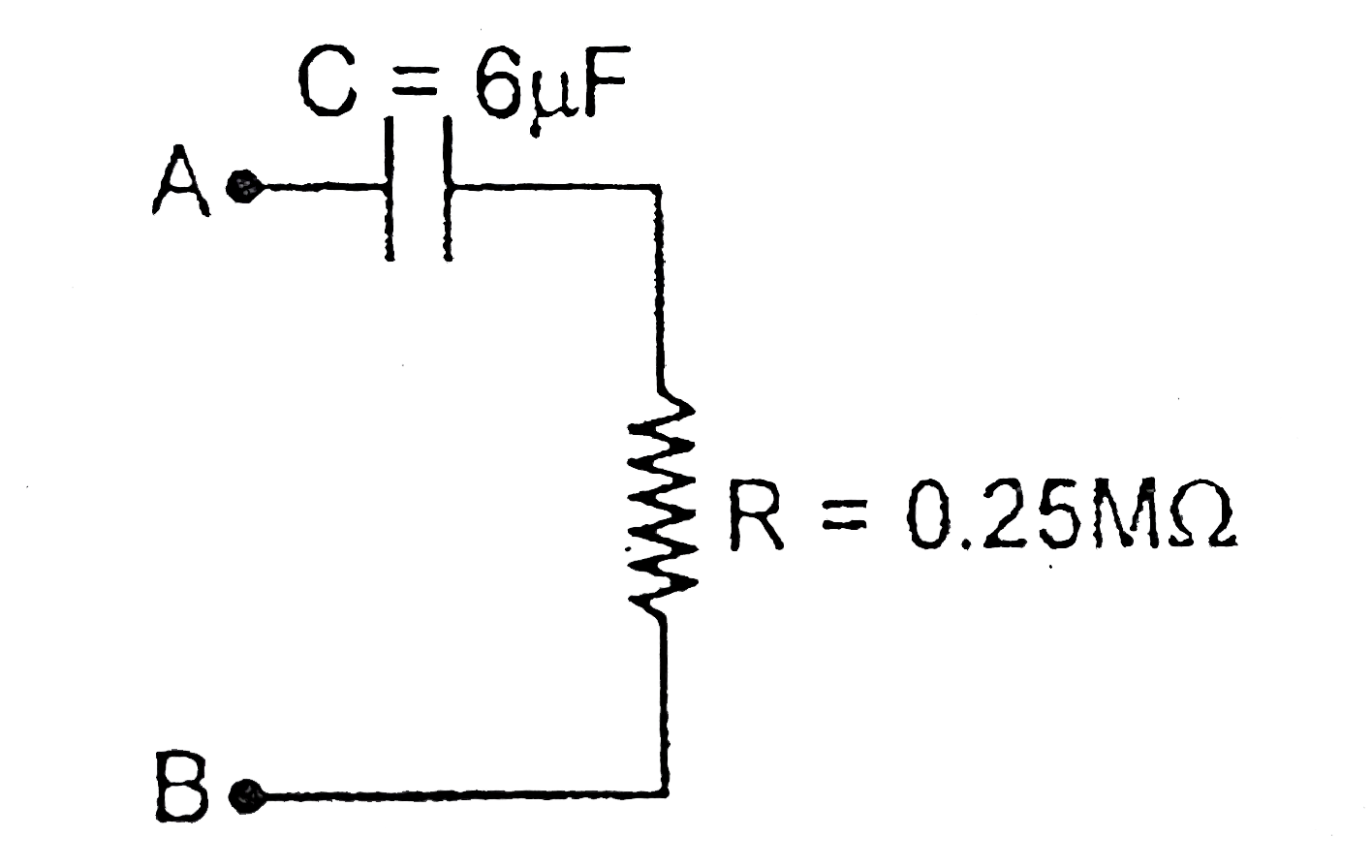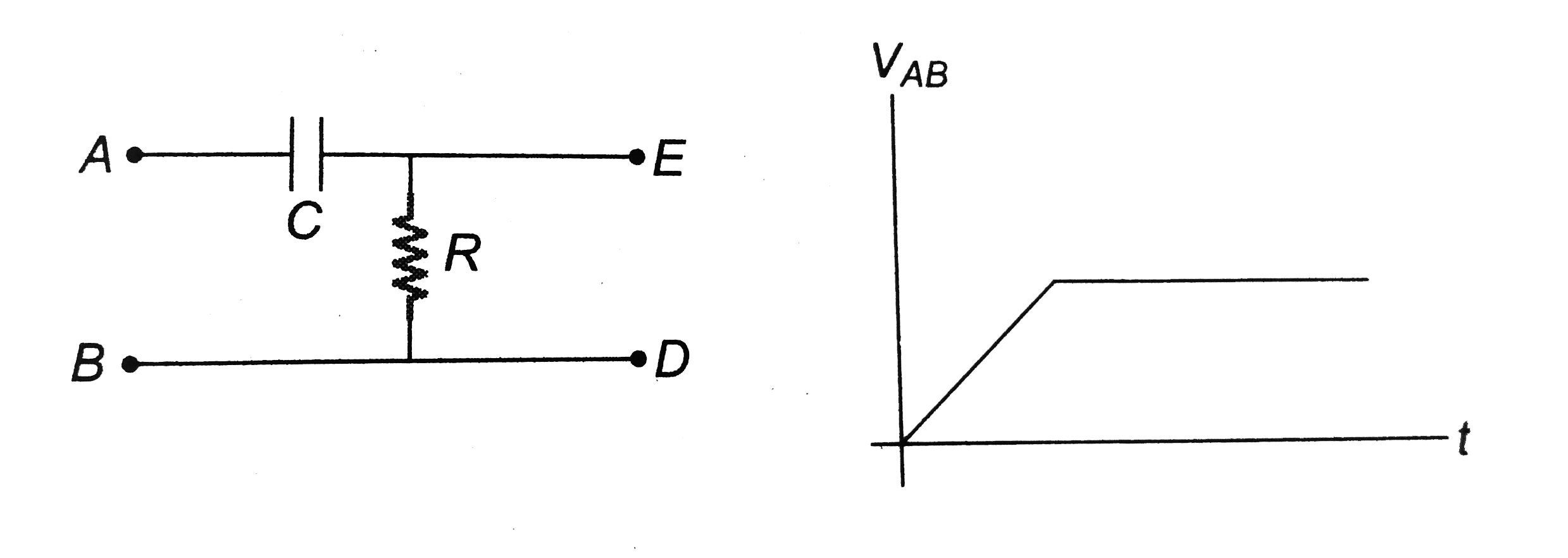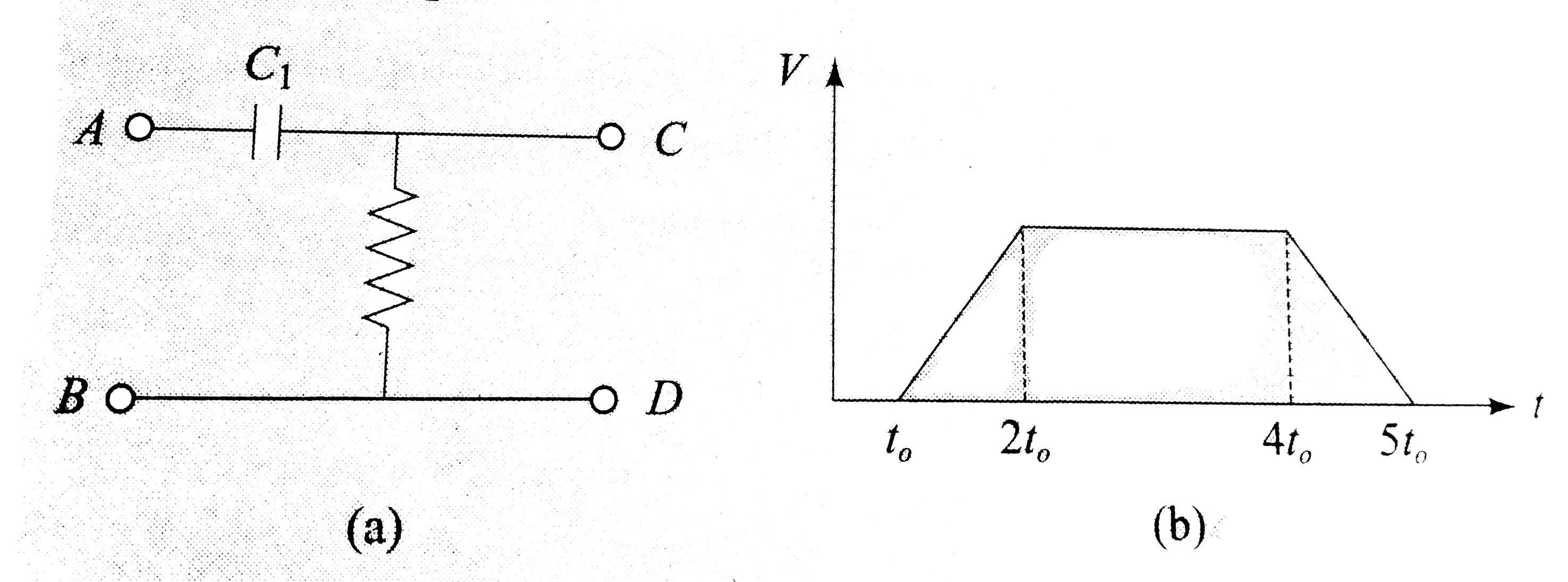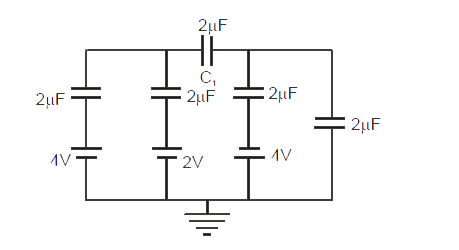A time varying voltage is applied across A & B such that voltage across capacitor is given by VC=2sin2t. What is maximum potential difference across the reistance? 
A
9V
B
18V
C
3V
D
6V
Video Solution
Text Solution
The correct Answer is:A
q=CV brgt =[6×3sin2t]×10−6
i=dqdt[6×3×2cos2t]×10−6
VR=iR=9cos2t⇒Vmax=9V
|
Updated on:21/07/2023
Similar Questions
Knowledge Check
- Question 1 - Select One
If A.C. voltage is applied to a pure capacitor, then votage across the capacitor ………….. .
Aleads the current by phase angle (π2) rad.Bleads the current by phase angle (π) rad.Clags behind the current by phase angle (π2)rad.Dlags behind the current by phase angle (π) rad. - Question 2 - Select One
The voltage applied across an X-rays tube is nearly
A10 VB100 VC100D10 V - Question 3 - Select One
If an alternating voltage is applied across a diode in series with a load, then
Aa DC voltage appears across loadBan AC voltage appears across loadCa pulsating voltage appears across loadDno voltage appears across load
A time varying voltage is applied to the clamps A and B such that voltage across the capacitor plates is as shown in the figure. Plot the time dependence of voltage across the terminals of the esistance E and D.
 View Solution
View SolutionIf a voltage V is applied across the bulbs in series then
View SolutionIf a voltage V is applied across the bulbs in series, then
View SolutionA varying voltage is applied to the clamps AB as shown in fig. such that the voltage across the capacitor plates varies as shown in the figure. Plot the time depending on voltage across the clapes CD.

 View Solution
View SolutionLet q be the charge on the capacitor at any time t. The voltage V across the capacitor is
View Solution



 Find voltage across capacitor
Find voltage across capacitor